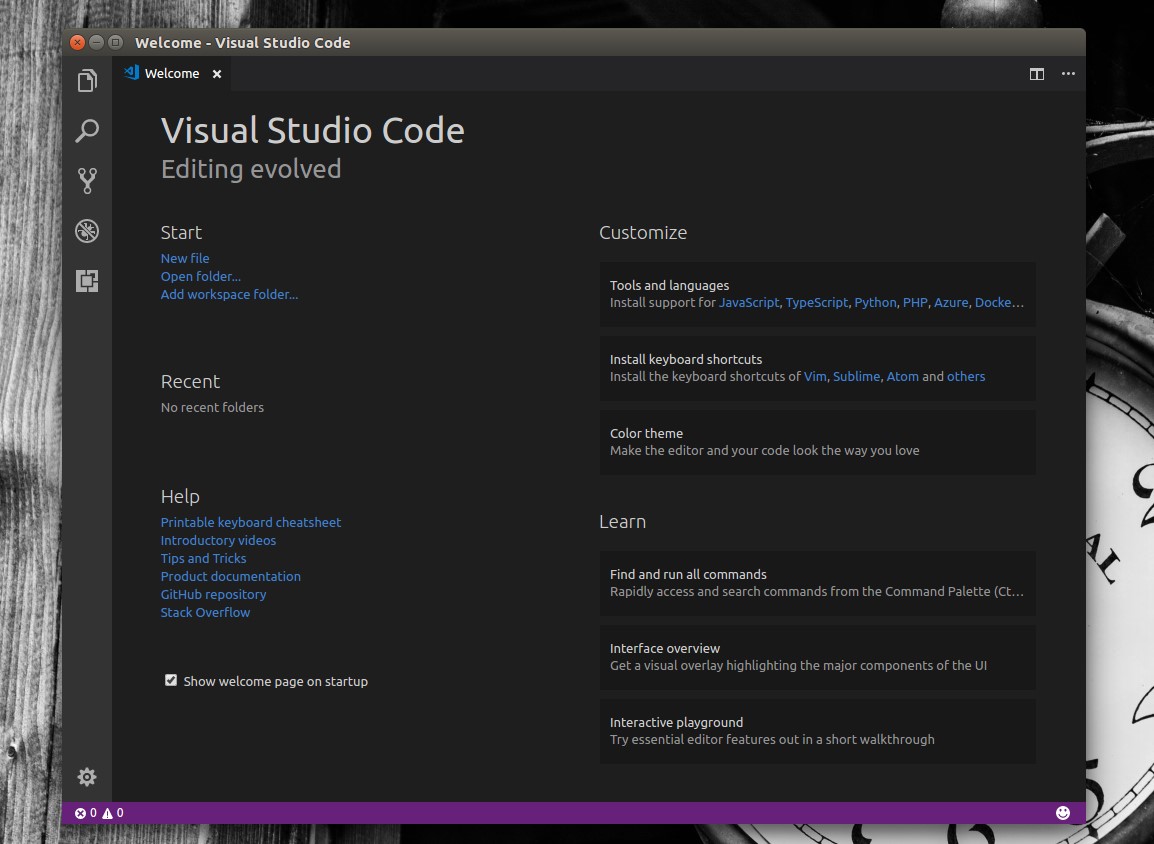
- #HOW TO RUN VISUAL STUDIO CODE ONLINE INSTALL#
- #HOW TO RUN VISUAL STUDIO CODE ONLINE FULL#
- #HOW TO RUN VISUAL STUDIO CODE ONLINE PLUS#
Note: If you are an extension author and want to have your extension available in the browser (we do!), check out our Web Extensions authoring guide.įor example, the Luna Paint - Image Editor extension lets you edit raster images directly in VS Code. That said, there are a growing number of extensions that have been updated to work in the browser, with more coming every day.

Most UI customization extensions such as themes, key maps, and snippets all work in v and you can even enable roaming between the browser, the desktop, and GitHub Codespaces through Settings Sync.Įxtensions that run Node.js code that use OS-specific modules, or shell out to local executables, still show in search results, but are clearly marked as unavailable.
#HOW TO RUN VISUAL STUDIO CODE ONLINE PLUS#
With these programming languages, you'll get the " Good" experience plus rich single file completions, semantic highlighting, syntax errors, and more.īest: For many "webby" languages, such as JSON, HTML, CSS, and LESS, the coding experience in v is nearly identical to the desktop (including Markdown preview!). Using a Tree-sitter syntax tree, we're able to provide additional experiences such as Outline/Go to Symbol and Symbol Search for popular languages such as C/C++, C#, Java, PHP, Rust, and Go.īetter: The TypeScript, JavaScript, and Python experiences are all powered by language services that run natively in the browser. Good: For most programming languages, v gives you code syntax colorization, text-based completions, and bracket pair colorization. In the browser, these experiences are powered by language services running fully in the browser (no file system, no runtimes) that provide source code tokenization and syntax colorization, completions, and many single-file operations.Īs a result, when in the browser, experiences generally fall into the following categories: For example, the terminal and debugger are not available, which makes sense since you can't compile, run, and debug a Rust or Go application within the browser sandbox (although emerging technologies like Pyodide and web containers may someday change this).Ī bit more nuanced are the code editing, navigation, and browsing experiences, which, on the desktop, are generally powered by language services and compilers that expect a file system, runtime, and compute environment. Since VS Code for the Web is running completely within the browser, some experiences will naturally be more constrained, when compared to what you can do in the desktop app. You can upload/download files (and even store them in the cloud using the Files app), as well as open repositories remotely with the built-in GitHub Repositories extension.Īnd, if your browser doesn't support local file system APIs, you'll still be able to open individual files by uploading and downloading them via the browser.
#HOW TO RUN VISUAL STUDIO CODE ONLINE INSTALL#
Edit your code on lower powered machines like Chromebooks, where you can't ( easily) install VS Code.Build client-side HTML, JavaScript, and CSS applications in conjunction with the browser tools for debugging.
#HOW TO RUN VISUAL STUDIO CODE ONLINE FULL#
Even if you are on a restricted machine where you cannot install the full VS Code, you may still be able to use v to view and edit local files. Quickly take notes (and preview!) in Markdown. This simple gateway to the local machine quickly opens some interesting scenarios for using VS Code for the Web as a zero-installation local development tool, such as: Modern browsers that support the File System Access API (Edge and Chrome today) allow web pages to access the local file system (with your permission). So, what can you do on VS Code for the Web? Quite a bit actually… Local development with cloud tools For a full history lesson, check out Erich Gamma's VS Code Day talk "VS Code An Overnight Success…10 Years in the Making". With the availability of v, we begin to finally realize our original vision of building a development tool that can run fully serverless in the browser.

Open a folder on your local machine and start coding. Now when you go to, you'll be presented with a lightweight version of VS Code running fully in the browser. Bringing VS Code to the browserįast forward to today. And we certainly didn't anticipate that it would end up being the fulfillment of a mission over a decade in the making. dev domain, we had no idea what we were going to do with it. dev top-level domain opened, we picked up v and quickly parked it, pointing at our website (or, if you are from the Boston area like me, we "pahked it").



 0 kommentar(er)
0 kommentar(er)
